O-2
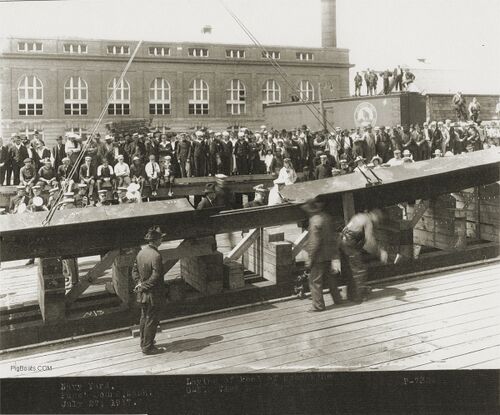
U.S. Navy photo.
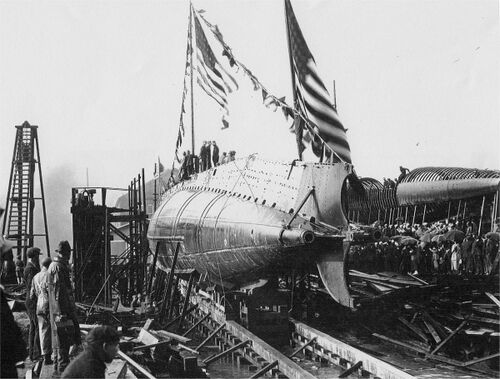
O-2 on launch day May 24, 1918 at Puget Sound Navy Yard. Notice that she is being launched without shafts or props and no stern planes or rudder. From the lighting in the photo it seems to be a late afternoon launch.
The submarine in frame on the right in the photo is the H-6, one of six "H" class submarines being assembled at the same time at the shipyard. These subs had been intended for the Russian Navy and had been built in Canada but the Russian Revolution halted the sale. The U.S. Navy bought them and had them sent to the Puget Sound yard for assembly.
You can also see that it is a bit of a rainy day with a lot of the spectators using umbrellas. If you look at the water under the slipway you can see the rings from the rain hitting the water. The ropes that seem to attach the submarine to the cradle are really to prevent the blocking from floating away once the submarine is floating on its own. The cradle and blocking will be used for the next vessel needing them.
U.S. Navy photo.
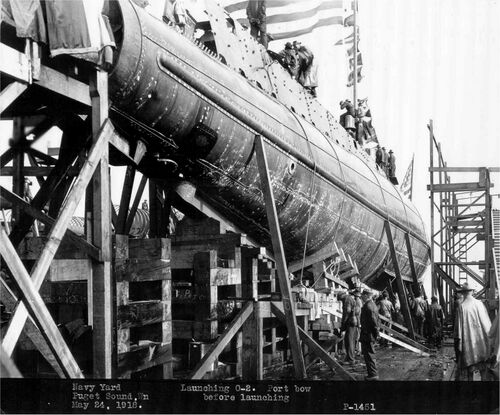
O-2 on launch day May 24, 1918 at Puget Sound Navy Yard. Notice that she is being launched without bow planes and some superstructure plating missing. Also, the torpedo tube bow cap is missing, it should be visible just behind the bunting on the top left. The bottom of the submarine is covered with chalk notations about construction and where to drill. Bisected by the second vertical brace is the Fessenden Oscillator used for underwater communication and identification.
U.S. Navy photo.

Seen under the hull of the O-2 are the submarines H-5 (left) and the H-6 (right) in frame with a workman sitting on the frames of the H-8 to watch the launch of the O-2. Barely seen are two other workmen to the right seen partly through the last opening. One is seen standing below and to the left slightly of the one sitting.
U.S. Navy photo.
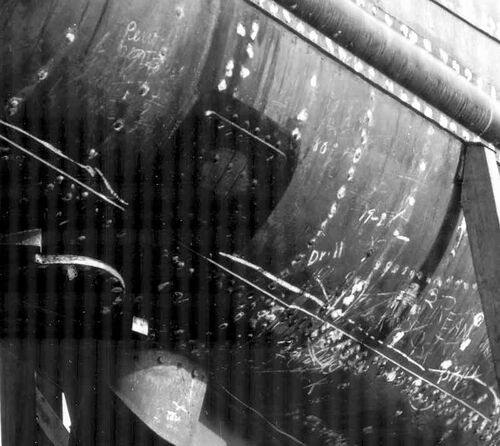
Close-up of the chalk marks on the bottom of the O-2. It seems that an inspector has been checking the rivets and seams prior to launch, an required practice to ensure that the hull is watertight prior to it entering the water.
U.S. Navy photo.

Close-up of the Fessenden Oscillator transducer used for underwater communication and identification. This unit was a predecessor to what became known as SONAR. It was invented in 1912 by Canadian born Reginald Fessenden, who later became a naturalized American citizen, and it was the first of the successful underwater listening device in the USN.
U.S. Navy photo.
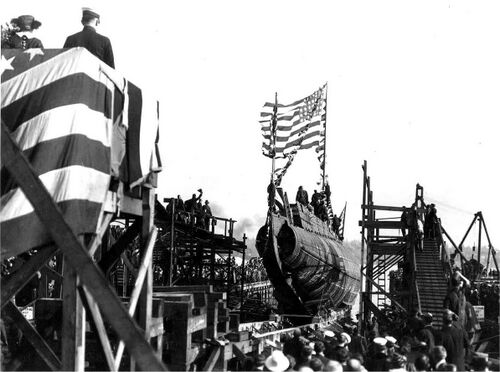
O-2 down the ways on launch day May 24, 1918 at the Puget Sound Navy Yard. Notice that she is being launched without bow planes and some superstructure plating is missing. Also, the torpedo tube bow cap has not been installed. The inner breech doors inside the torpedo room will keep the boat watertight until the bow cap is installed. The submarine's sponsor, Mrs. Francis T. Chew, can be seen atop the launch platform in the top left of the photo. From the lighting in the photo it seems to be a late afternoon launch and the sun has finally broken through as evidenced by the shadows on the submarines hull.
Photo NH 63183 courtesy of NHHC.



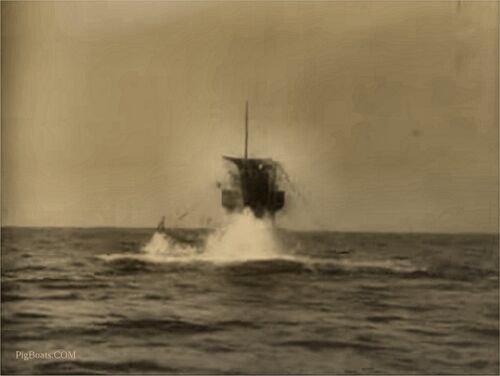
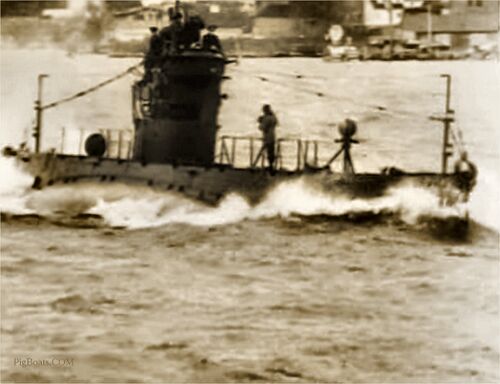
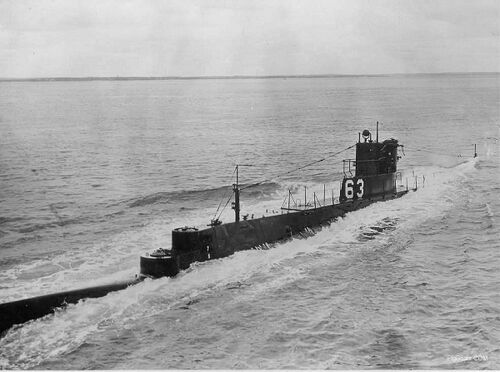
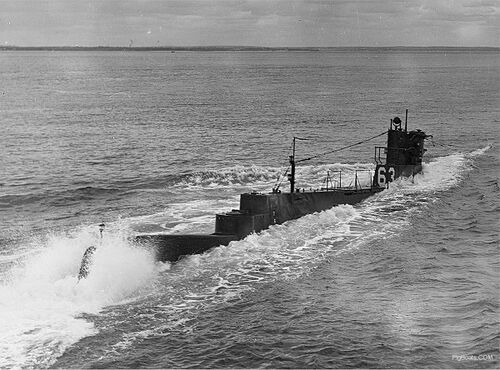
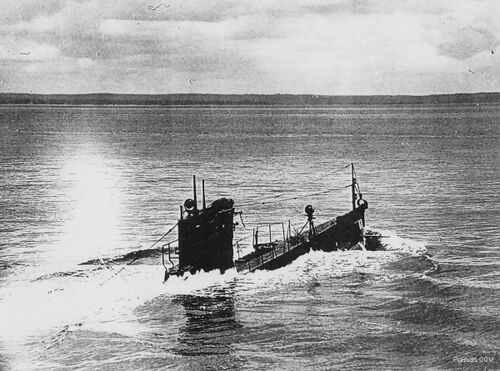
Page created by:
Ric Hedman & David Johnston
1999 - 2023 - PigBoats.COM©
Mountlake Terrace, WA, Norfolk, VA
webmaster at pigboats dot com
